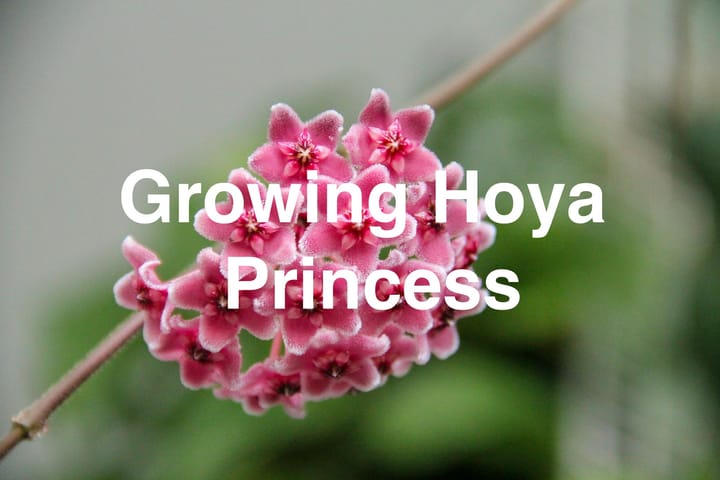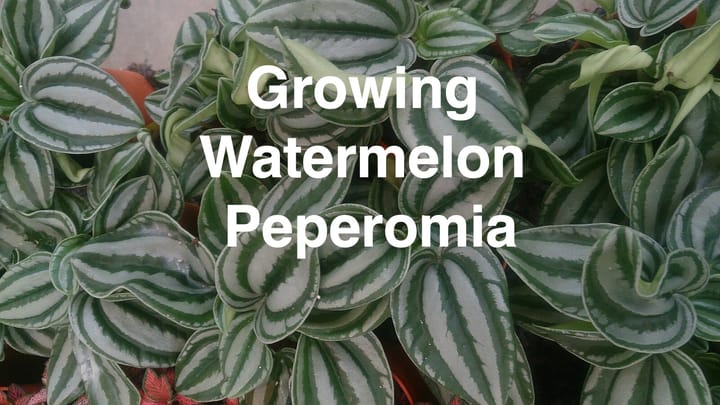How to Grow Caladium
Caladiums are stunning foliage plants known for their vibrant, multicolored leaves that can transform any shady or semi-shady garden into a captivating haven.
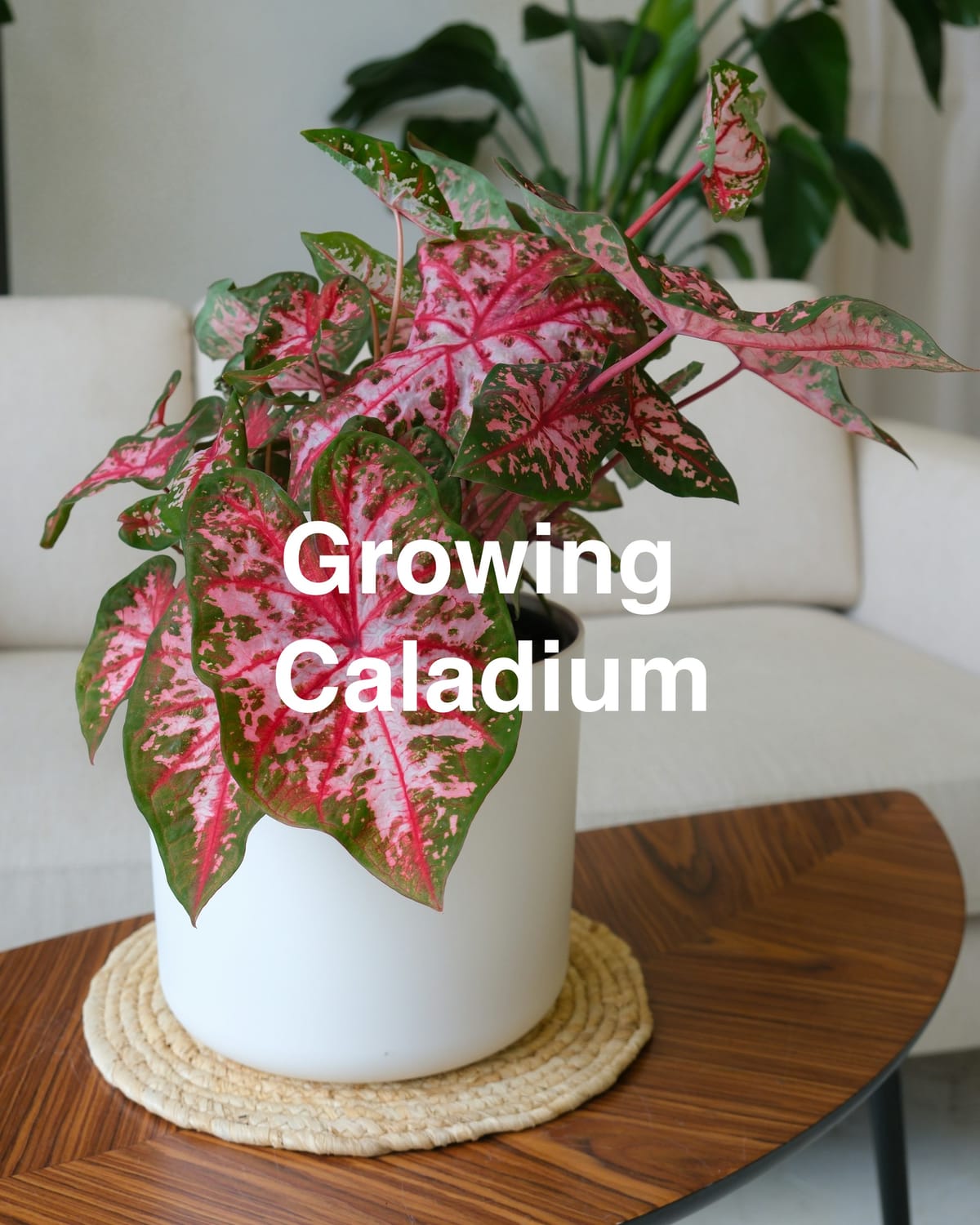
Originating from the tropical forests of South America, they are perennials in warmer climates.
Growing caladiums is not overly difficult, but it does require an understanding of their preferences and environment to ensure a successful, colorful display.
To start growing caladiums, you'll need to plant tubers in the spring when the soil has warmed and there is no risk of frost. It's essential to select the right variety that matches your climate and garden conditions.
When planting, place each tuber about 2 inches deep in well-draining soil with the eyes, or growth points, facing upward. Proper spacing, typically 8 to 12 inches apart, ensures each plant has room to flourish.
Caladium care involves maintaining evenly moist soil without overwatering, which can lead to root rot.
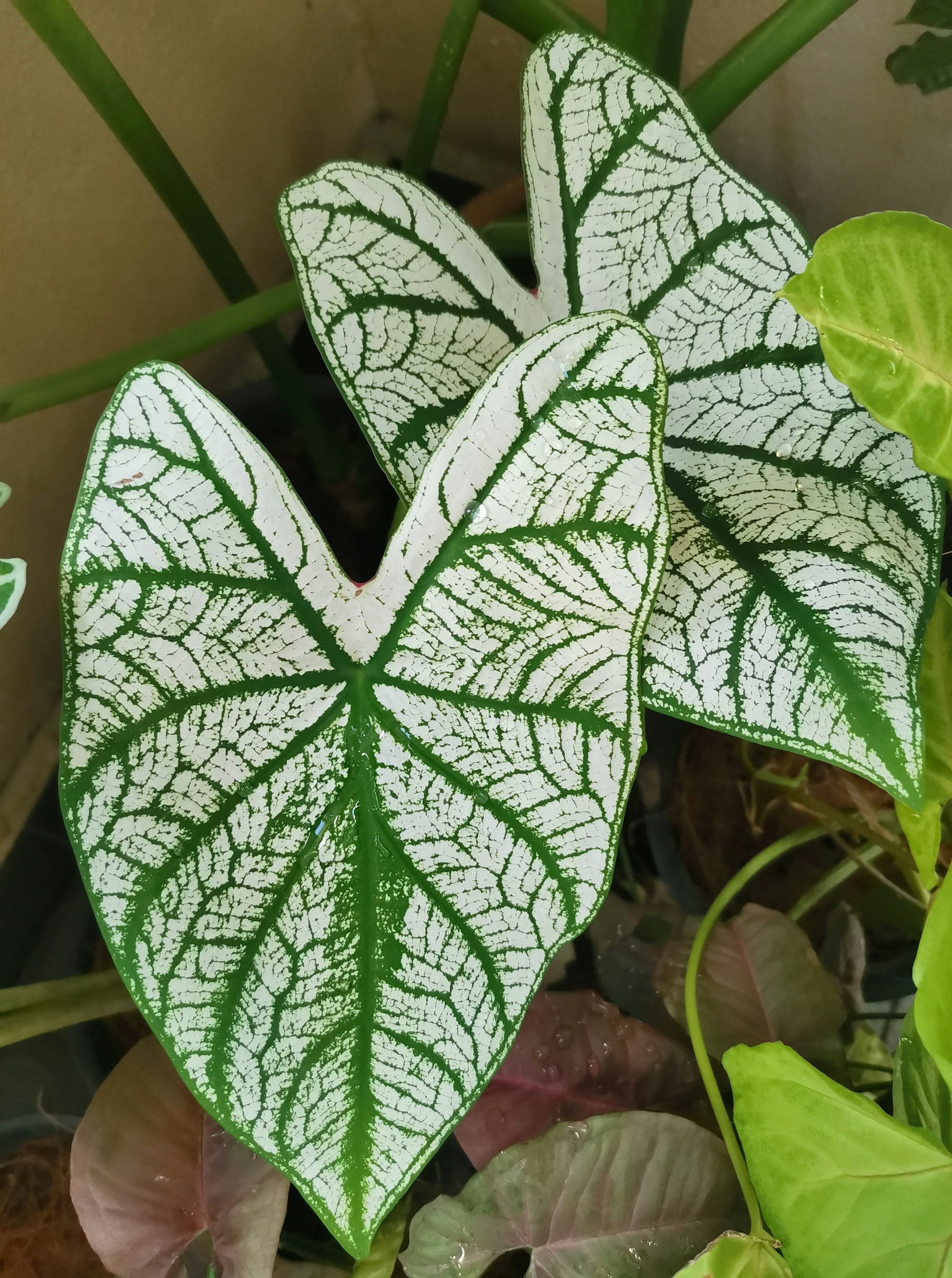
They thrive best in warm temperatures with high humidity, and they prefer partial to full shade, as too much direct sunlight can scorch their leaves.
These plants are relatively low maintenance, but like all plants, they can encounter pests and diseases.
It is also possible to grow caladiums in pots, which may be a preferable option for gardeners in cooler climates. In these areas, the tubers can be overwintered indoors to protect them from freezing temperatures.
Key Takeaways
- Caladiums offer colorful foliage and can add a tropical flair to your garden or indoor space.
- Planting should occur in spring when the soil is warm, ensuring the tubers are placed correctly in well-draining soil.
- Caladium care includes maintaining moisture and warmth while protecting them from too much direct sunlight and frost.
Understanding Caladiums
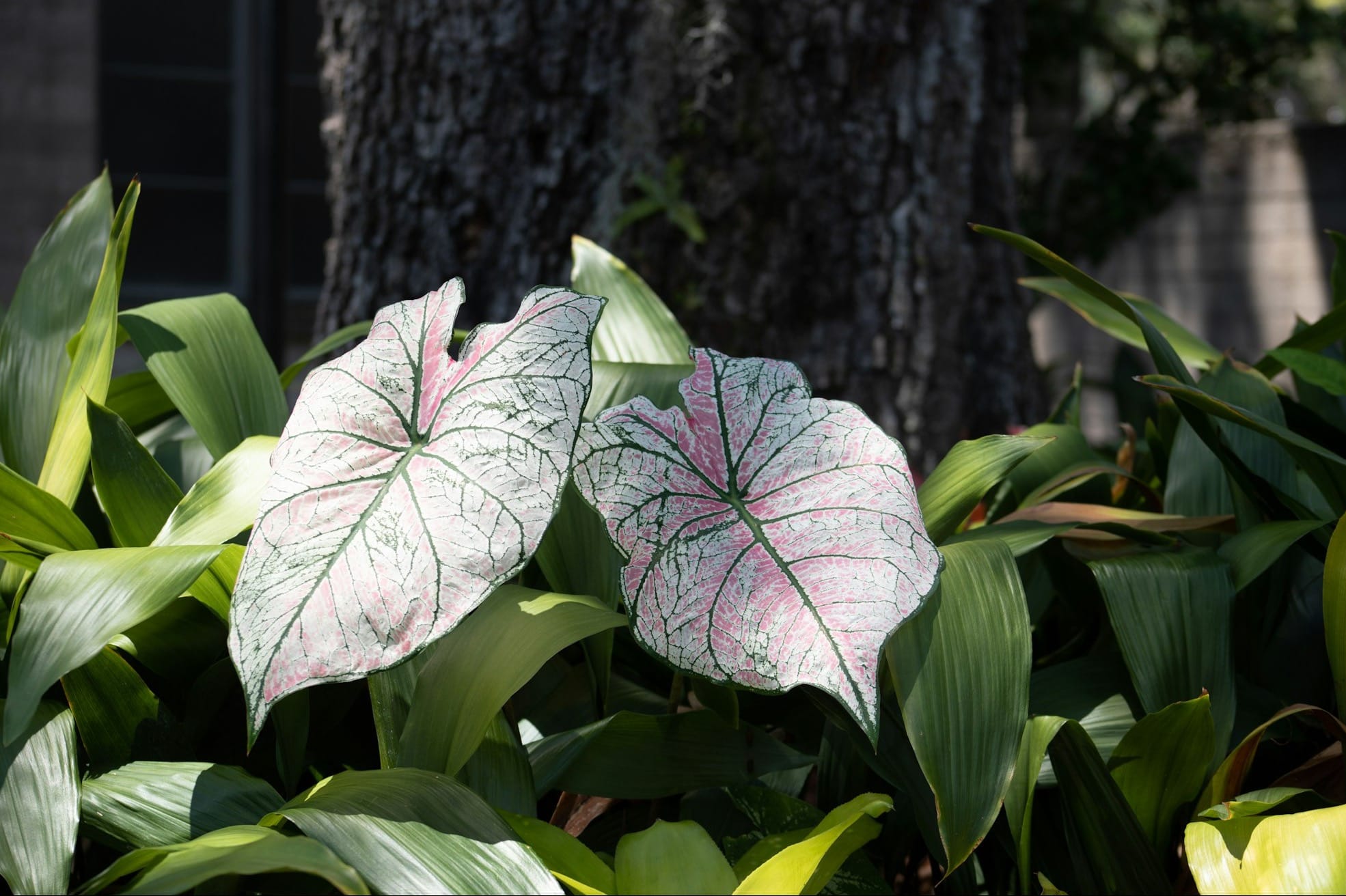
Caladiums are a tropical perennial known for their striking foliage, with a range of patterns and colors from vibrant reds to deep greens.
As members of the family Araceae, they boast heart-shaped leaves which catch the eye in any garden setting.
Different Varieties:
- Fancy Leaf Caladiums: Typically have heart-shaped leaves and an upright growth habit. They can tolerate varying amounts of shade, though some may withstand more sun.
- Lance Leaf Caladiums: Feature more elongated leaves and can often handle sunnier spots compared to their fancy leaf counterparts.
Foliage: The foliage is the main attraction, offering visual interest throughout spring and summer. Each variety comes with its unique pattern and coloration, making caladiums versatile for design purposes.
Growing Conditions:
- Soil: Ensure the soil is well-draining yet holds moisture. Amend with organic matter like compost for optimal plant health.
- Light: While generally shade-loving, some varieties can tolerate partial sunlight, which often enhances leaf color.
- Water: Regular watering is crucial, but let the top portion of the soil dry out to prevent overwatering issues.
- Temperature: Protect from cold; caladiums thrive in warmth and should not be exposed to temperatures below 60°F.
Remember, understanding the life cycle of your caladium is key. They grow actively in warmer months and enter dormancy in cooler seasons. By catering to their natural rhythm, you'll enjoy their ornamental value to the fullest.
Selecting the Right Varieties
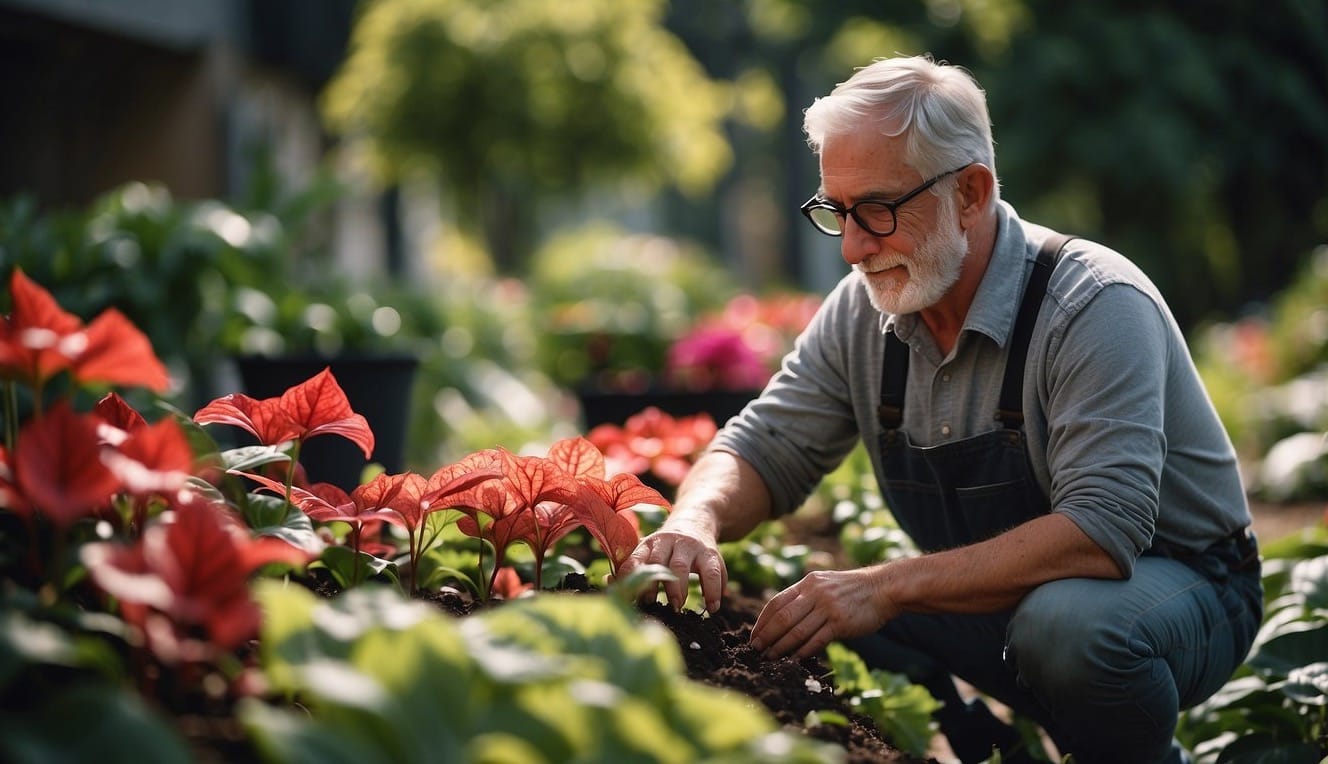
When choosing Caladium varieties, consider not only the climate and sunlight in your garden but also the visual impact you desire.
The different leaf shapes and colors can influence the overall appearance of your landscape.
Fancy-leaf Varieties
Fancy-leaf caladiums are known for their large, heart-shaped leaves that come in a myriad of color combinations and patterns.
They typically thrive in shaded areas, adding a burst of color to your garden with vibrant colors that can include shades of red, pink, white, and green.
- Popular Fancy-leaf Varieties:
- 'Carolyn Whorton': Bright pink leaves with green edges
- 'Florida Sweetheart': Rosy-pink leaves with deep green margins
Lance-leaf Varieties
The lance-leaf caladiums, as the name suggests, have more elongated leaves. They can tolerate more sun than their fancy-leaf counterparts and are suitable for a brighter spot in your garden or as container plants.
- Notable Lance-leaf Varieties:
- 'Red Frill': A compact variety with ruffled red leaves and narrow green edges
- 'White Wing': Elegant white leaves accented with green veins
When selecting your caladiums, remember that the size of the bulbs is indicative of the maturity and size of the plant; larger bulbs tend to produce more substantial and fuller plants sooner.
Planting Caladium Tubers
When preparing to plant Caladium tubers, it’s important to consider both soil temperature and the tubers themselves.
Ensure that the soil temperature has reached at least 70°F (21°C) before planting, which typically correlates to early spring in mild climates or around May 1st in colder regions.
Use the following guidelines for planting:
- Site Selection: Choose an area with partial to full shade; Caladiums thrive in indirect light.
- Soil Preparation: Amend your soil with organic matter to ensure it is moist and well-draining.
- Planting Depth: Plant tubers approximately 2 inches deep.
- Orientation: Place the tubers with the eyes, or growth points, facing upward.
Adhere to these spacing recommendations:
| Tubers Size | Spacing |
|---|---|
| Large | 8 inches apart |
| Small | 4 inches apart |
After planting:
- Watering: Water the tubers well so the soil is evenly moist but not waterlogged.
- Maintenance: Keep the soil consistently moist throughout the growing season.
- Fertilization: Apply a balanced fertilizer once a month to help sustain growth.
Remember that good hydration is key. The soil should never be allowed to dry out completely, but beware of overwatering which can lead to tuber rot. With proper care and attention, you will create an ideal environment for your Caladiums to thrive.
Caladium Care Essentials

Successful cultivation of caladiums hinges on your ability to meet their specific needs for light, water, soil, and climate conditions. Attending to these aspects is crucial for the vibrant foliage that makes caladiums a standout in your garden.
Lighting Requirements
Caladiums thrive in indirect light and can be burned by direct sun. Filtered sunlight, such as that found under tall trees, will ensure your caladium’s leaves remain unscathed and brightly colored.
If you are growing caladiums indoors, place them near a window where sunlight is bright but diffused through curtains.
Watering Practices
You should keep the caladium soil evenly moist but not saturated. Overwatering can lead to root rot. Here’s a brief guide:
- Watering Frequency: Check the top inch of the soil; water once it feels dry to the touch.
- Amount of Water: Provide enough water to moisten the soil without waterlogging it.
Soil and Fertilizer
Caladiums prefer an acidic soil that drains well. Incorporate well-rotted compost, manure, or leaf mulch to enhance soil structure.
For fertilization:
- Use a balanced, water-soluble fertilizer every four to six weeks during the growing season.
- Do not fertilize during the dormant period.
Temperature and Humidity Control
Maintain a temperature range between 65°F and 80°F for optimal growth.
Caladiums need high humidity; if the air in your home is dry, especially during winter, use a humidifier or mist the foliage regularly.
Keep the plant away from cold drafts and places with sudden temperature changes.
Optimizing Growth Conditions
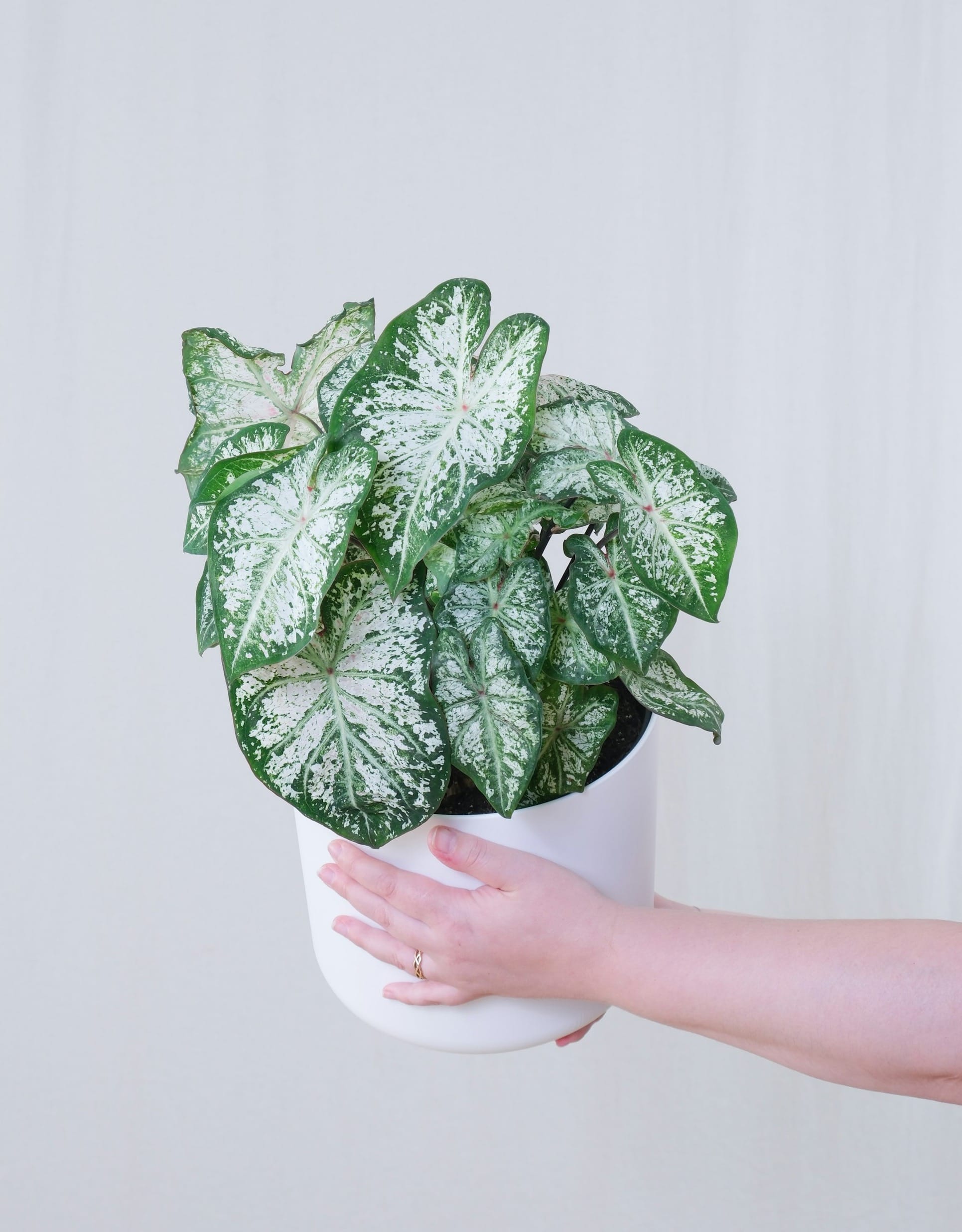
For successful caladium cultivation, your attention to growth conditions during the growing season is crucial.
Caladiums thrive in warm, humid environments, so ensure you time the planting after the risk of frost has passed.
Sunlight & Shade: Caladiums prefer a balance between sunlight and shade. They should be protected from direct sun, which can scorch their delicate leaves. Ideally, plant them in a location where they receive filtered sunlight or partial shade.
Soil Requirements:
- Type: Well-draining and rich in organic matter.
- pH: Slightly acidic to neutral.
- Amendments: Incorporate leaf mulch or well-rotted compost to enhance soil quality.
Keep the soil consistently moist, but take care to avoid waterlogging as this can lead to root rot.
Use a container with drainage holes if growing in pots and choose a high-quality potting mix.
Temperature:
- Optimal Growth: Maintain temperatures above 65°F (18.3°C).
- Dormancy: During dormancy in fall, reduce watering and allow for a cooler environment around 55°F (13°C).
General Tips:
- Planting Depth: Plant tubers about 2 inches deep.
- Spacing: Space them 8-12 inches apart to allow room for growth.
Managing Pests and Diseases

Caladiums, with their vibrant and colorful leaves, generally maintain good health, but they do face risks from certain pests and diseases.
Your preventive actions and timely response to these issues can ensure your caladiums remain beautiful and robust.
Common Pests
- Aphids: These small, soft-bodied insects can be a nuisance, feeding on plant sap and causing foliage distortion. Regularly check your plants and if needed, apply insecticidal soap to control their population.
- Mealybugs: Watch for these white, cottony pests that usually cluster in leaf axils and under leaves. Potted caladiums can be treated with a direct application of alcohol using a cotton swab, followed by a rinse with water.
- Mites and Caterpillars: Both can cause visible damage to the leaves. For mites, use of a miticide may be effective, while caterpillars can be picked off by hand or treated with appropriate insecticides.
Fungal and Bacterial Diseases
- Root Rot: Overwatering creates conditions for fungal pathogens like Fusarium and Pythium which result in root rot. Ensure your soil is well-draining and avoid waterlogged conditions. If root rot is suspected, reduce watering immediately and treat with a suitable fungicide.
- Leaf Spot Diseases: Caused by various fungi and bacteria, these appear as discolored spots on leaves. Improve air circulation, avoid overhead watering, and remove affected leaves to control the spread.
Potting and Repotting Caladiums
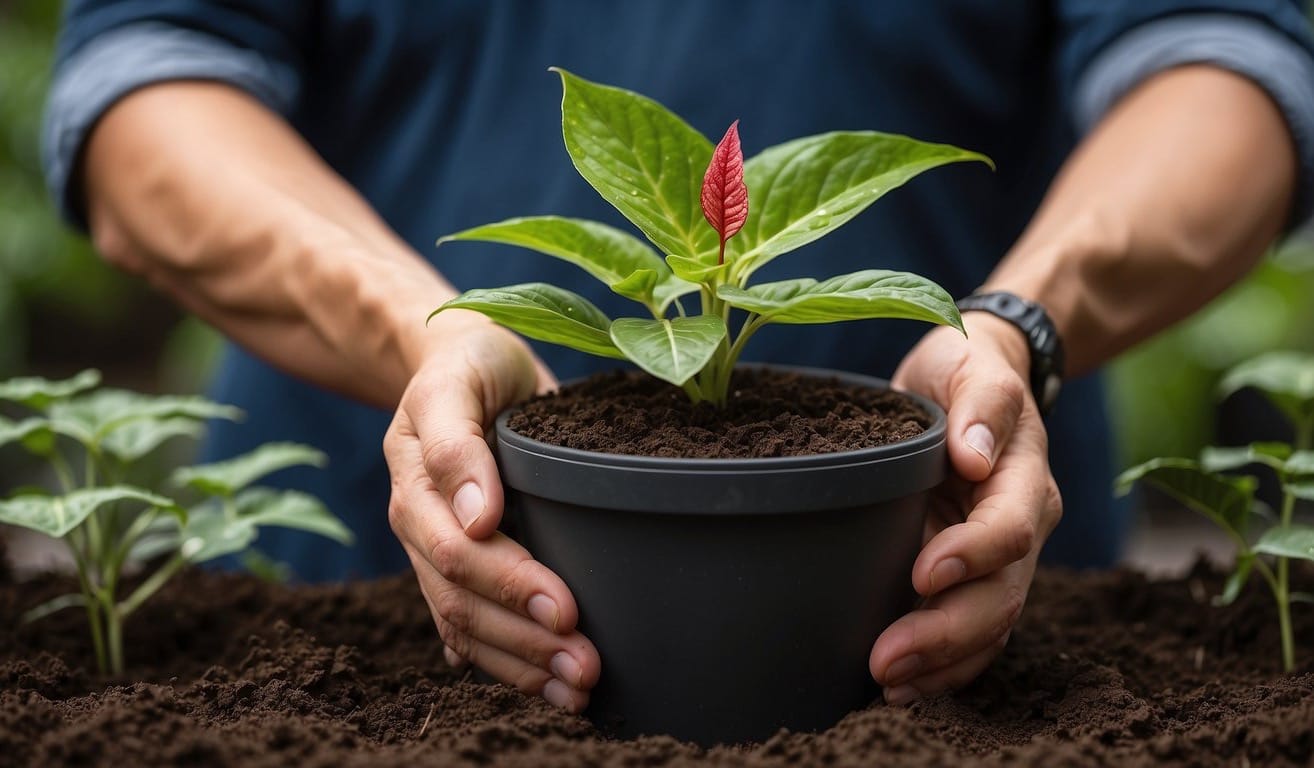
When potting your caladiums, choose a container that complements the size of your tubers. Pots should have adequate drainage holes to prevent waterlogged soil, which can lead to root rot.
Potting Mix:
- Use high-quality potting soil.
- Ensure it contains organic matter, like peat moss, to retain moisture.
- The potting mix should be slightly acidic.
Initial Potting:
- Layer the bottom of the container with gravel or pot shards to improve drainage.
- Fill the pot partially with the potting mix.
- Place the tuber in the center with the eye buds facing up.
- Cover with more potting soil, leaving the top of the tuber just below the soil surface.
Indoor and Outdoor Considerations:
- Indoors: Choose a bright spot without direct sunlight.
- Outdoors: Provide partial shade to protect the leaves from scorching.
- Repot caladiums when they outgrow their pots or the soil seems depleted.
- Typically every year or two.
Repotting Steps:
- Water your caladium lightly a day before repotting to reduce stress.
- Carefully remove the plant from its current pot.
- Inspect the roots and trim any rotted or dead sections.
- Select a new pot one size larger than the old one.
- Follow the initial potting steps with fresh potting mix.
Overwintering and Propagation
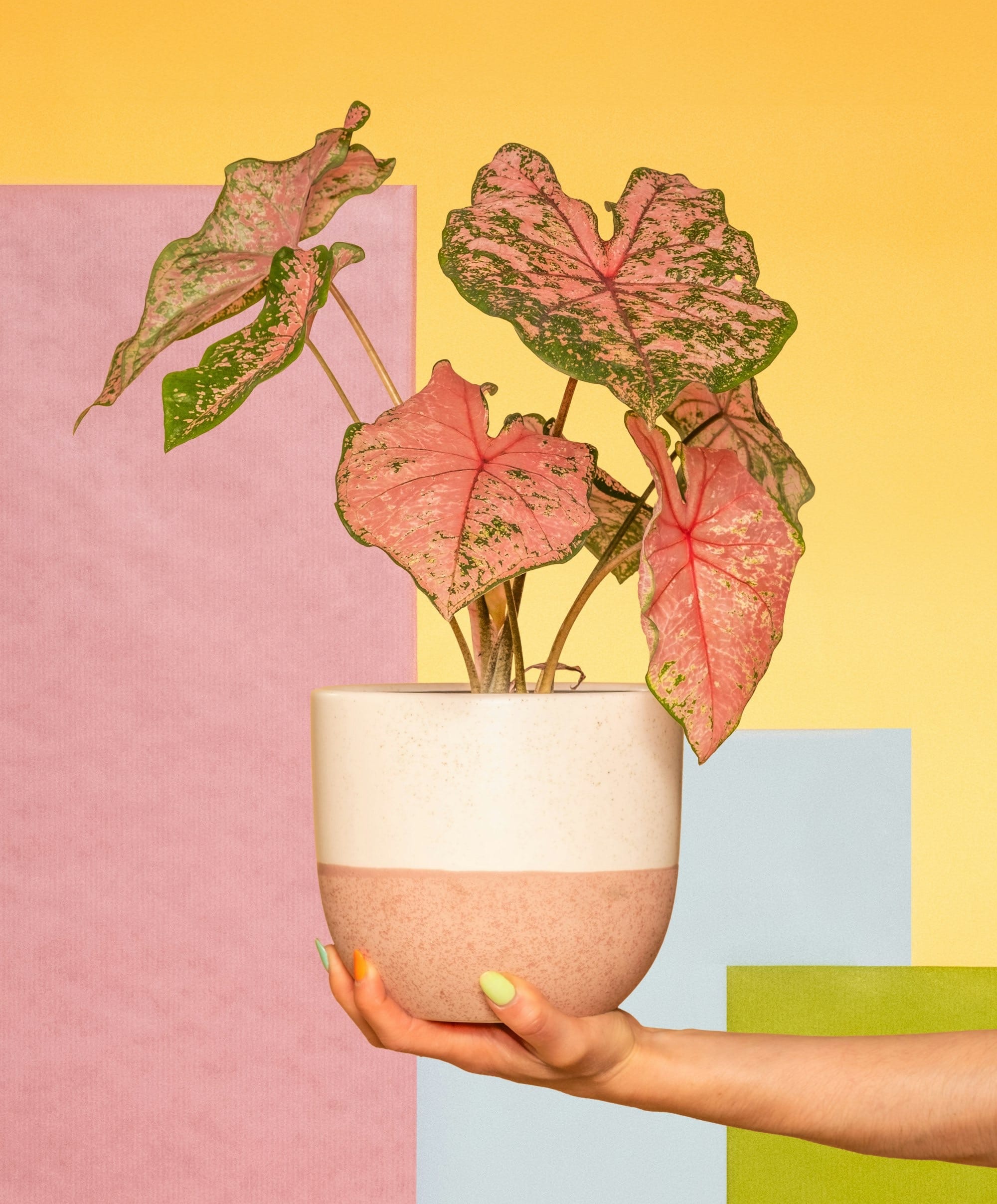
Overwintering Caladiums
Due to their perennial nature in warm climates but often grown as annuals in cooler regions, Caladiums require proper overwintering to ensure their survival and re-emergence for the next growing season.
As the temperatures drop and your Caladiums become dormant, it’s crucial to protect the bulbs from frost.
If you’ve planted Caladiums directly in the ground:
- Stop watering the plant as the foliage begins to die back.
- Wait for the foliage to turn yellow and wilt.
- Gently dig up the bulbs, being careful not to cut or bruise them.
- Clean off any soil and let them dry for a few days in a warm, well-ventilated area, avoiding direct sunlight.
- Once dry, store the bulbs in a dry, cool spot where temperatures remain around 60°F.
For Caladiums in pots:
- Simply move the container to a protected location where temperatures are consistent and above freezing. Let the soil dry out and refrain from watering throughout the winter.
Propagating Caladiums
In the spring, propagation can be a rewarding way to multiply your Caladium collection.
- Select a healthy bulb and divide it into sections, ensuring each section has at least one eye or growing point.
- Plant the tubers in a mixture of potting soil enriched with compost or other organic matter to foster growth.
- Space the tubers appropriately, about 4-6 inches deep and 9-12 inches apart to give them ample room to thrive.
Frequently Asked Questions
Caladiums are tropical plants with colorful foliage that can add vibrancy to your garden or home. Here are some FAQs to help you create optimal conditions for your caladiums to thrive.
What is the ideal soil composition for potting caladiums?
For potting caladiums, use a rich, humusy soil that ensures good drainage. The ideal soil mix should be slightly acidic to neutral (pH 5.6 to 7.0). Adding peat moss or leaf mold can enhance soil fertility and water retention.
What are the best practices for growing caladium indoors?
When growing caladium indoors, select a well-lit spot away from direct sunlight which may scorch the leaves. Maintain indoor temperatures between 70° and 80°F and ensure the soil stays consistently moist but not waterlogged.
How can I accelerate the growth of my caladium plants?
To encourage faster growth, maintain a warm and humid environment, provide dappled sunlight or shade, and keep the soil moist. Use a balanced, water-soluble fertilizer every four to six weeks during the growing season.
What steps are involved in propagating caladiums from seeds?
Caladiums are more commonly propagated from tubers, but if propagating from seeds, sow them on the surface of a moist, well-drained seed starting mix. Provide warmth, high humidity, and maintain even moisture until germination, which can take a few weeks.
How do I maintain caladiums during the winter months?
In regions where winter temperatures fall below 60°F, dig up caladium tubers before the first frost and let them dry. Store the tubers in a cool, dry place over the winter and replant them in spring once the danger of frost has passed and the soil has warmed.
Are caladiums suitable to be planted in PON substrate?
Caladiums require well-draining soil to prevent root rot. A porous inorganic substrate (PON) can be suitable, as long as it is supplemented with nutrients normally provided by organic matter in the soil.
Ensure that the PON substrate retains moisture and is not allowed to dry out completely.
